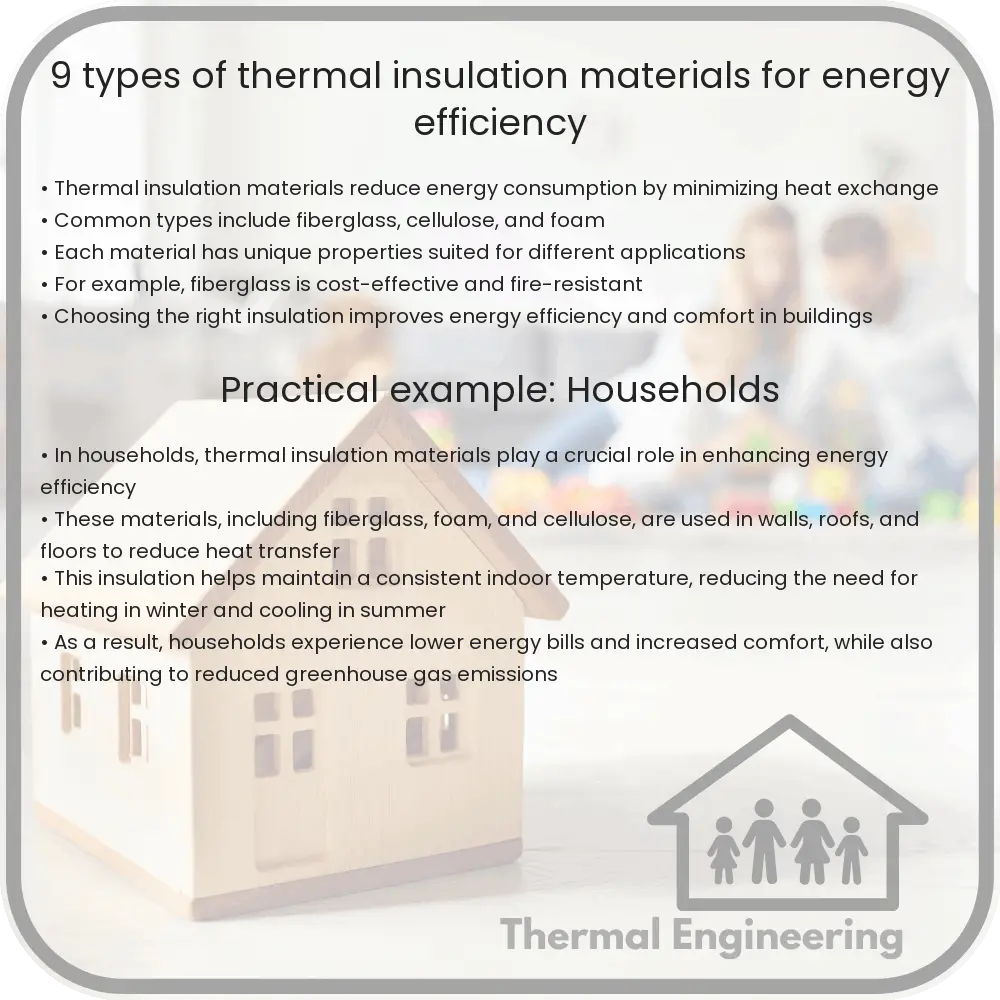Learn about the nine common types of thermal insulation materials used in construction for enhanced energy efficiency.

9 Types of Thermal Insulation Materials for Energy Efficiency
Thermal insulation is crucial for energy efficiency in buildings and various engineering applications. It reduces unwanted heat loss or gain, thereby decreasing the energy demands of heating and air conditioning systems. Here are nine common types of thermal insulation materials used in construction and manufacturing.
Fiberglass
Fiberglass is made from fine fibers of glass and is one of the most ubiquitous insulation materials. Its major advantages include its low cost, non-flammability, and effective thermal insulation properties. Fiberglass is commonly used in both residential and commercial constructions in the form of batts or rolls, loose-fill, and rigid boards.
Mineral Wool
Mineral wool refers to several different types of insulation, including rock wool and slag wool. Rock wool is created from natural basalt or diabase, while slag wool is produced from blast furnace slag. Mineral wool is known for its fire resistance and sound insulation properties as well as its thermal insulation capabilities.
Cellulose
Cellulose insulation is made from recycled paper products, primarily newsprint, and treated with fire retardants. It is an eco-friendly option that provides good thermal performance. Cellulose can be installed using wet-spray or dense-pack techniques, ideal for filling cavities in walls.
Polyurethane Foam
Polyurethane foam is a versatile insulation material that comes in spray and rigid foam board forms. It has a high R-value per inch, making it one of the most effective insulators. Spray foam polyurethane can be used to seal gaps and crevices, improving both the thermal and air barrier of a building.
Polystyrene
Polystyrene is a plastic material available in two types: expanded polystyrene (EPS) and extruded polystyrene (XPS). EPS is the less expensive option and is commonly known as “Styrofoam”. XPS tends to be denser and more water-resistant than EPS. Both types offer good thermal resistance and are used in a variety of building applications.
Reflective Insulation
Reflective insulation, also known as radiant barrier insulation, is made from aluminum foil laminated onto paper or plastic. It is effective at reducing cooling costs by reflecting radiant heat rather than absorbing it. This type of insulation is particularly useful in hot climates.
Cellular Glass
Cellular glass insulation is composed of crushed glass and a foaming agent. It forms a rigid material with a closed-cell structure, providing excellent compressive strength, moisture resistance, and fire protection. Cellular glass is often used in industrial applications and on flat roofs.
Aerogel
Aerogel has remarkable thermal insulating properties, primarily due to its high porosity and low thermal conductivity. It is, however, more expensive than other forms of insulation. Aerogel is often used in specialized applications such as aerospace, oil and gas pipelines, and high-performance clothing.
Natural Fibers
Natural fibers such as wool, cotton, and straw can be used as insulation materials. Sheep’s wool insulation, for instance, is natural, renewable, and able to manage moisture effectively. Cotton insulation, often made from recycled denim, is treated with boric acid to make it fire and pest resistant. These options are appealing for those seeking sustainable building materials.
In conclusion, choosing the right type of thermal insulation material can lead to significant energy savings and enhanced comfort. Each material offers unique benefits and is suited to different applications, depending on factors such as climate, space, and budget constraints.